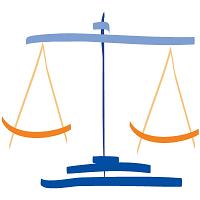
To the usual reader this question might seem even redundant. But to attorneys in general, and particularly attorneys that practice civil rights, the question is real, and with profound practical consequences. The question has become even more important, various appellate courts seem to fully grasp and understand the difference between the two concepts, yet does not want to explain fully what it means in practical terms. However, outside colloquy, possible and plausible stand for very different conceptual degrees of existence. Plaintiff attorneys are vigilant to state all relevant factual recitations in a complaint, just to be sure that it meets the plausibility requirements; thereby increasing the potential of unnecessarily giving premature notice of facts that may have been strategically withheld. Defendant attorneys are just throwing those detail-hungry motions out there, in order to attempt to sway the courts to dismiss a case. Also, in-house attorneys and case managers should be aware that not all pleadings can or should be dismissed even if not very detailed. Thus, investing resources in pursuing a groundless dismissal may be unwarranted or ill-advised.
It may be difficult to determine when do the allegations in a complaint state a plausible rather than a merely possible claim for remedy. So, what is my criteria? Well, the volume and quality of the facts in support of a claim must be sufficient to establish each of the elements of a cause of action. So, the complaint should be drafted following the elements of the cause of action and stating facts that support a theory of violation for which a redress is available in the law. Sounds familiar? Yes, because it is what has been done in courts forever.
The analysis followed by district and appellate judges has always excluded "formulaic recitations of the elements of a cause of action". What changed with Twombly and Iqbal? The Supreme Court simply clarified, albeit very implicitly, that not all allegations are created equal. Notice pleading was not, after all, a standard in of itself, but rather; the facts in support of a claim must be gauged in reference and direct relationship with the cause of action that it seeks to establish.
That way, a more complex cause of action, like a cause of action based upon a violation of substantive due process, or a claim for supervisory liability, will require a more elaborate set of facts than a claim for the use of unreasonable force, or a claim for political discrimination. This is, because the cause of action is, for example, exceptional, elaborate, or plainly more complex. These causes of action will demand more factual development of the pleadings, and the cases simply require that a plaintiff seeking discovery will have to refer to sufficient facts, both in quantity and quality, which support a finding that a violation is reasonably apparent on the face of the pleadings, rather than just merely capable of having occurred.
Therefore, when a court determines that a claim is plausible it finds that the facts stated in the complaint, taken as true, actually show that a violation actually occurred. However, instances in which the allegations merely sketch the factual scenario in which a violation typically occurs are insufficient. They remain within the "realm of the merely possible and do not transcend to the plausibility plain through the vortex of notice pleading" - as I once heard a colleague jokingly comment. In more scientific lingo, you have to measure the particle, and once measured, you will have to determine it existed or not, because merely conceptual or theoretical assumptions are insufficient.
- Ave. Rio Hondo PMB 130
- Rio Hondo
- Bayamón, PR 00961-3113
- Cel. 787-647-6632,
- Fax: 775-366-7629,
No hay comentarios:
Publicar un comentario